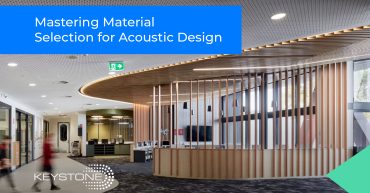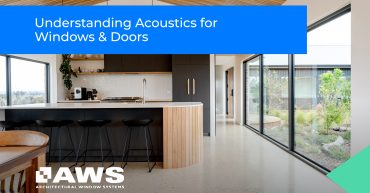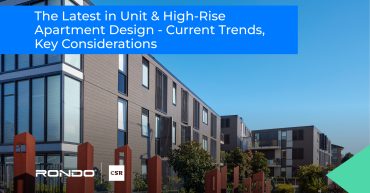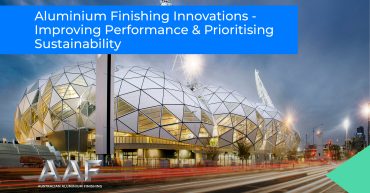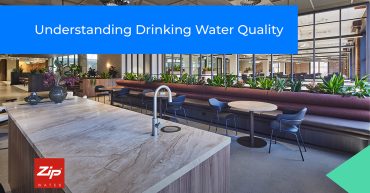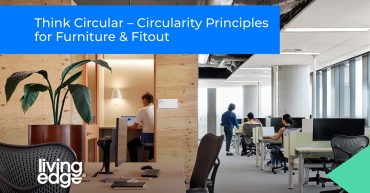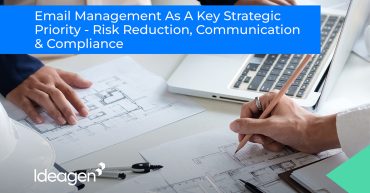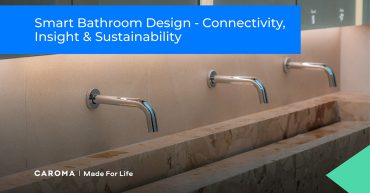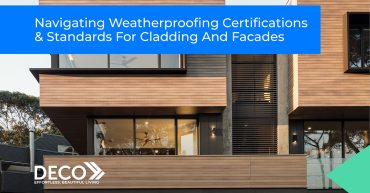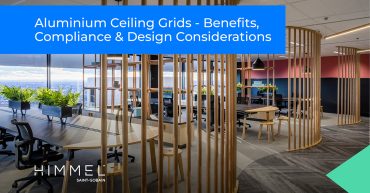Mastering Material Selection for Acoustic Design – Understanding the Essential Factors: Performance, Aesthetics & Sustainability
Today’s session focuses on an aspect of architectural design that directly shapes how people experience a space: interior acoustics. Beyond visual impact, your role as architects, designers and specifiers is to create spaces that support clear communication, minimise distraction and promote occupant wellbeing. Effective interior acoustic design is not just about sound control; it’s about […]
This CPD Understanding Acoustics will explore how windows and doors contribute to the acoustic performance of the building envelope. We’ll unpack the fundamentals of sound, how it is measured, and how it behaves in built environments. Then we’ll move into testing standards and acoustic ratings before examining real-world design and specification factors for windows and […]
Thanks to a range of factors – including population growth, the housing crisis and environmental concerns associated with urban sprawl – Australian cities are in a process of transformation. With the traditional quarter-acre block now beyond the means of most first home buyers, we are seeing more and more high-density residential developments, particularly around transport […]
Thanks to its strength, its light weight, and the fact that it is infinitely recyclable, architectural aluminium is a growing and vital part of our built environment. For decorative and protective reasons, most products of this type are finished in some way, with finishes sometimes described as ‘100% of the visibility, but less than 1% […]
Clean, safe, and reliable drinking water is a critical consideration in the design and specification of commercial and health environments. In this CPD Live session, we explore the key factors architects, designers, and specifiers must take into account when incorporating filtered drinking water systems into projects. Beginning by identifying the various bodies responsible for water […]
Unlike the traditional economic model in which products are manufactured, sold, and eventually disposed of – all in a relatively linear fashion – circularity is about re-use, recycling, and refurbishment. It is about disposing of materials only when they can longer be used in any other practical way, and in so doing, minimising negative environmental […]
Email is critically important to project-based businesses like architectural and design practices. A primary means of communications, it is used for everything from client briefs and consultant coordination to contractor instructions and more. Considering the increasing complexity of these types of information and mounting compliance expectations, poorly managed email represents a genuine (and serious) risk. […]
Beyond style and aesthetic appeal, the key considerations when designing commercial bathrooms centre around adherence to guidelines, the maintenance of hygiene, and sustainability. The good news for specifiers is that, right now, they have a set of sophisticated tools to help them meet these broad goals. Thanks to the Internet of the Things – and […]
There are several factors to keep in mind when specifying external cladding and façade systems. Beyond design considerations, the materials chosen should be durable and easy to maintain. They should be sound in terms of thermal performance, environmentally sustainable, acoustics and fire safety. And they should be waterproof. Dependent upon local conditions, façade systems need […]
There are several factors that specifiers should consider when choosing ceiling grid systems. Beyond their function – as frameworks with which to suspend panels or tiles and conceal wiring, pipes and so on, in commercial applications – they should be visually appealing. On top of this, ceiling grid systems should perform well in terms of […]

